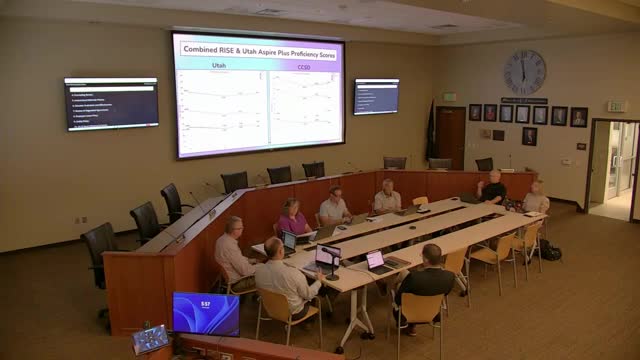Education leaders confront alarming gaps in student performance
June 07, 2024 | Cache County School District, Utah School Boards, Utah

This article was created by AI summarizing key points discussed. AI makes mistakes, so for full details and context, please refer to the video of the full meeting. Please report any errors so we can fix them. Report an error »

In a recent government meeting, education officials discussed critical issues surrounding student performance and support, particularly focusing on English Language Learners (ELL) and students with disabilities. The conversation highlighted concerns about the persistent achievement gap for ELL students, which has reportedly widened since the onset of the COVID-19 pandemic. Officials expressed optimism that ongoing efforts in schools could help close this gap as more students transition out of ELL status and improve their academic language skills.
The meeting also addressed the state’s accountability measures, specifically the Targeted School Improvement (TSI) and Additional Targeted Support and Improvement (ATSI) designations. Currently, nine schools are classified under ATSI for their ELL population, with additional schools identified for students with disabilities and Hispanic students. The officials noted that these classifications serve as a notification system to ensure that schools receive the necessary support to improve performance.
A significant point of discussion was the discrepancy between rising graduation rates and stagnant or declining proficiency scores. Officials questioned whether the metrics used to measure graduation and proficiency are aligned, suggesting that a deeper analysis is needed to understand this trend. The meeting concluded with a focus on attendance rates, which have been declining, particularly in elementary schools, raising concerns about student engagement and retention.
Overall, the meeting underscored the ongoing challenges within the education system, particularly for vulnerable student populations, while also recognizing the efforts being made to address these issues.
The meeting also addressed the state’s accountability measures, specifically the Targeted School Improvement (TSI) and Additional Targeted Support and Improvement (ATSI) designations. Currently, nine schools are classified under ATSI for their ELL population, with additional schools identified for students with disabilities and Hispanic students. The officials noted that these classifications serve as a notification system to ensure that schools receive the necessary support to improve performance.
A significant point of discussion was the discrepancy between rising graduation rates and stagnant or declining proficiency scores. Officials questioned whether the metrics used to measure graduation and proficiency are aligned, suggesting that a deeper analysis is needed to understand this trend. The meeting concluded with a focus on attendance rates, which have been declining, particularly in elementary schools, raising concerns about student engagement and retention.
Overall, the meeting underscored the ongoing challenges within the education system, particularly for vulnerable student populations, while also recognizing the efforts being made to address these issues.
View full meeting
This article is based on a recent meeting—watch the full video and explore the complete transcript for deeper insights into the discussion.
View full meeting

